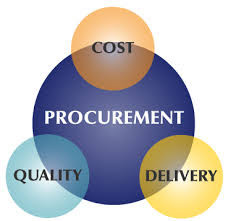
The life of a procurement professional is always oscillating between the highs of achievement and lows of failure. As another cliché goes, in procurement, the only certainty is more uncertainty. It is easy to get lost in the noise. Supply chain professionals are operating in a business environment where complexity and ambiguity are the norm and clarity is always fleeting.
They are forced to navigate in a business environment where the ability to predict outcomes is forever shrinking. The pursuit of procurement excellence is rarely linear.
Staying relevant will always demand continuous recalibration. The procurement world of work is evolving faster than ever, and it would appear the future isn’t just coming. It is already here, rendering the old procurement playbook obsolete. For procurement professionals this is not a gentle nudge. It is a wakeup call to be more agile and flexible. The need for flexibility and agility in a world which is in a state of flux has been a known secret.
The request for quotation (RFQ) method can provide that agility and flexibility.
It would, however, appear that in the public procurement space the request for quotation method of procurement is often misunderstood. There is an ever present belief that this method of procurement must be used sparingly because it is deemed to be a tender splitting method of procurement.
The narrative is further reinforced by the fact that procuring entities are being forced to consolidate certain categories that are not related, isolating the benefits associated with category management. In extreme cases, certain items that are not strictly ICT-related are forcibly grouped under one category, all in an effort to dissuade procurement professionals from using the request for quotation method. The insinuation is almost akin to implying that this method of procurement is not a competitive bidding process.
This thought process seems to promote a culture of silence masquerading as public procurement alignment with the procurement laws and regulations. Although many supply chain professionals may not agree, we let the comfort of consensus override the courage of dissent just for the sake of progress.
Let’s be real for a second. The request for quotation is never used with a view to split tenders as is often misunderstood in the public procurement space. Using the request for quotation method for lower valued purchases is not just common sense; it is good business sense. However, over the years we have learnt that common sense is not common practice.
- Tarakinyu, Mhandu triumph at Victoria Falls marathon
- Plot to oust ED thickens
- Bread in short supply as bakeries demand US$
- Young vocalist making southern Africa dance
Keep Reading
The ability to see beyond the obvious is not always obvious. In the labyrinth of supply chain transactions, the request for quotation procurement method stands out as a beacon, guiding organisations through the intricate bidding wars for the company’s wallet.
In supply chain management, every dollar counts and knowing which procurement method to adopt at what point and under what circumstances can be a game changer.
The request for quotation procurement method is designed to solicit and compare commodity prices from multiple suppliers with a view to creating a competitive environment. It is a procurement method designed to source low value procurement of readily available off-the-shelf goods.
There is often a mistaken belief that consolidating requirements will benefit organisations through economies of scale. But that is just part of the story. The opportunity cost of spending money in bulky procurement is often conveniently forgotten. Every dollar saved in inventory control drops straight to the bottom line, underscoring the efficacy of inventory management in the achievement of profitability. Bulk buying leads to a bloated inventory position. Being inventory-rich and cash-poor is not a position of strength.
Apart from the challenge of cash flow management, there is also the challenge of the opportunity cost of carrying excess inventory since inventory has got a negative effect of increasing the organisation’s upfront costs especially where the possibility of opportunistic sales is far and in between.
What is the point of buying goods in bulk when they are not yet due for use? The fact that certain items are budgeted for in a financial year does not mean all the said items must be bought at once.
Procurement entities are forced to spend huge amounts of money to avoid tender splitting only for the goods to be stored somewhere until their use is due. The RFQ method helps organisations buy the little required for use at short notice and must be utilised for such.
The importance of the request for quotation method is often subtle, quietly pulling the strings behind the scenes. It is a nuance that often goes unspoken in public procurement cycles. The RFQ method represents a streamlined approach to procurement, focussing on the essential products necessary for use at any given point in time. This will assist prospective suppliers to tailor their bid submissions to meet the specific needs of the organisation.
Nyika is a supply chain practitioner based in Harare. For views and comments, he can be contacted at [email protected]






